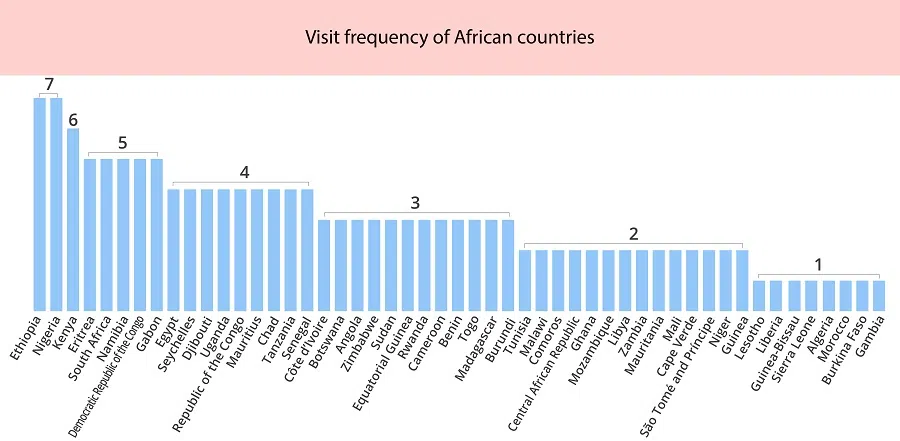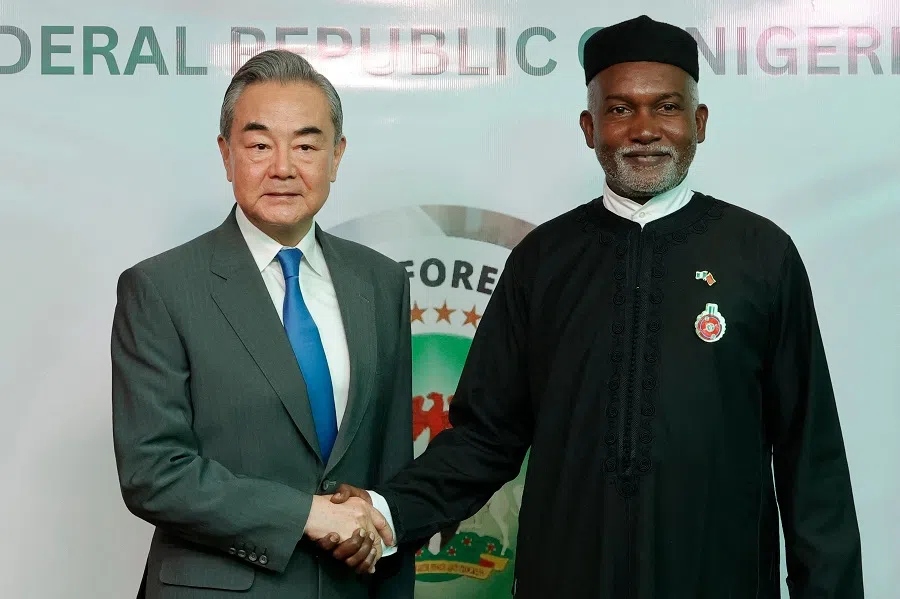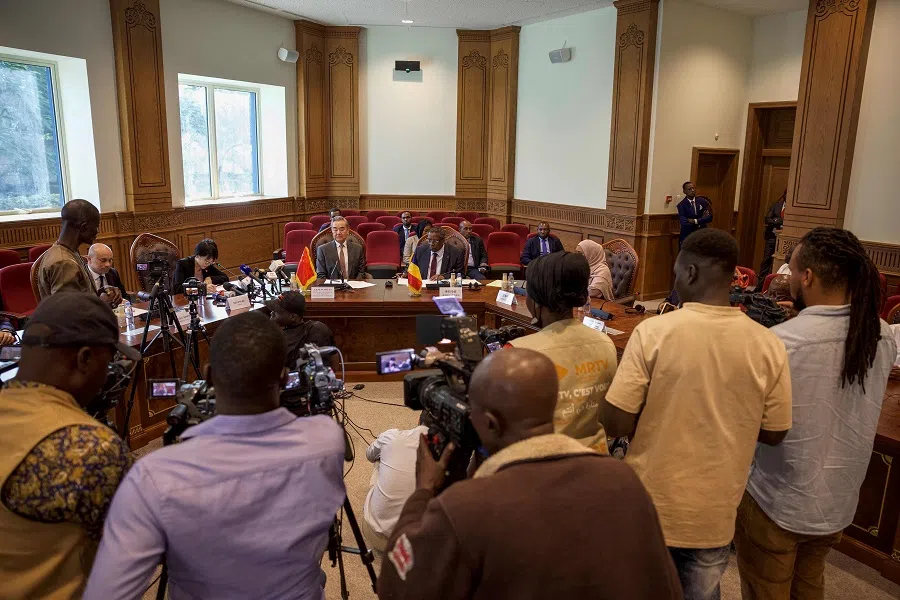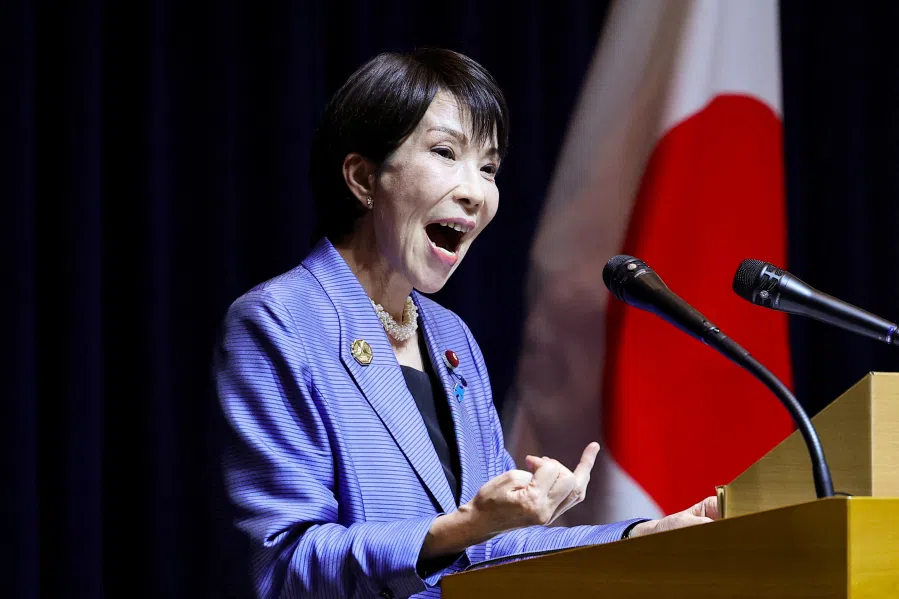China’s African diplomacy: Tradition rooted in strategy
Continuing a longstanding tradition, China’s foreign minister once again embarked on an African tour at the start of the year. Academic Hao Nan analysed these annual visits since 1991, concluding that China-Africa relations are steadily strengthening.

As the calendar flipped to 2025, Chinese Foreign Minister Wang Yi embarked on a week-long visit to Africa, upholding a 35-year tradition for Chinese foreign ministers to kick off the new year with diplomatic visits to African nations. This year, the itinerary included Namibia, the Republic of the Congo, Chad and Nigeria where Wang reaffirmed the strategic partnerships and community of a shared future in the new era with the African leaders.
Beyond emphasising the visits’ symbolism, they underscored China’s long-term commitment to positioning itself as Africa’s most reliable partner in an increasingly multipolar world amid heightening global power rivalries. From energy cooperation and security engagement to advancing sustainable development, Chinese foreign ministers’ start-of-the-year trips reinforced the prioritised status of Africa in China’s foreign policy agenda.
Since 1991 to the present, Chinese foreign ministers achieved an impressive coverage rate of 96% by visiting 51 of the 53 African nations that China maintains diplomatic ties with...
Breadth and depth of engagement
The author’s research has shown that China’s engagement with Africa is unrivalled in its scope and consistency. Since 1991 to the present, Chinese foreign ministers achieved an impressive coverage rate of 96% by visiting 51 of the 53 African nations that China maintains diplomatic ties with (Eswatini remains the only African country maintaining diplomatic relations with Taiwan). This commitment underscores China’s emphasis on inclusivity and comprehensive engagement, ensuring that nearly all African nations, regardless of size or influence, are part of its foreign policy outreach.
Certain countries have stood out as focal points. Ethiopia and Nigeria, for instance, have each hosted Chinese foreign ministers seven times, reflecting the African countries’ strategic importance. Ethiopia’s role as the headquarters of the African Union and its strategic location in East Africa make it indispensable to China’s regional diplomacy. Nigeria, as Africa’s largest economy and a leader in infrastructure and digital innovation, serves as a cornerstone of Sino-African development relations.

Other highly visited nations include Kenya, with six visits, and Eritrea, South Africa, Namibia, Democratic Republic of the Congo (previously named Zaire) and Gabon, each receiving five visits. Additionally, countries like Egypt, Seychelles, Uganda, Chad, Republic of the Congo, Mauritius, Djibouti, Tanzania and Senegal have been visited four times each, signifying their regional or economic significance. On the other end of the spectrum, some countries, including Sierra Leone, Burkina Faso, Morocco, Algeria, Lesotho, Guinea-Bissau, Liberia, and Gambia, were visited only once during this 35-year period, presenting more limited engagement.
Subregional engagement further highlights Beijing’s tailored approach. East Africa has seen the most visits (58), underscoring its strategic importance, particularly Ethiopia’s symbolic and logistical roles. West Africa follows with 37 visits, focused on economic powerhouses like Nigeria and Senegal. Central Africa, with 28 visits, has been prioritised for its resource wealth, including oil and minerals. Southern Africa’s 17 visits reflect partnerships with influential nations like South Africa and Namibia. While North Africa’s 13 visits indicate limited engagement in the context of start-of-the-year African visits, the region is often framed under China’s broader Arab world or Middle East diplomacy.
Evolution of Sino-African engagement
Contextualised into China’s broader diplomacy and the global dynamics since 1991, the 35-year-long tradition can be divided into four phases. In the first phase (1991-2000), China turned to Africa along with Asia, Latin America and the Middle East, to rebuild global partnerships amidst Western isolation following the 1989 Tiananmen incident, as Africa at the time refrained from condemning China and became a critical region for a diplomatic breakthrough.
At the same time, the collapse of the Soviet Union left a strategic vacuum in Africa, creating opportunities for China to strengthen its ties with the continent. Symbolic diplomacy characterised this phase, as China focused on East and West Africa, securing vital resources like oil and minerals, and supporting independence movements. Key visits included Ethiopia, Kenya and Madagascar, highlighting China’s dual focus on major players and smaller nations.
This phase emphasised economic diversification, with a focus on technology transfer and industrialisation alongside resource extraction. Visits to Ethiopia, Djibouti and Senegal showcased this comprehensive approach.
Amid the launch of the Forum on China-Africa Cooperation (FOCAC) at the end of 2000, and China’s WTO accession in 2001, the next phase (2001-2010) was marked by a shift to economic engagement and multilateral cooperation. Large-scale infrastructure projects, such as railways, highways, industrial parks and ports, facilitated connectivity and ensured trade and resource flows. Partnerships with major powers like Nigeria and Angola, as well as smaller nations like Cape Verde, demonstrated a balanced strategy. This period also marked the institutionalisation of Sino-African relations under the FOCAC, demonstrating systematic and broad-based collaboration across various sectors.

The third phase (2011-2020) started in 2011, the kick-off year of China’s 12th Five-Year Plan. This period witnessed China’s enhanced campaign for businesses to “go overseas” with the emergence of the increasing production capacity surplus at home following the 2008-2009 RMB four trillion economic stimulus. This further culminated into the unveiling of today’s grand Belt and Road Initiative (BRI) in 2013, integrating Africa as a key component of its global connectivity strategy.
Transformative infrastructure projects, like the Addis Ababa-Djibouti Railway, deepened economic ties, while public health initiatives, including responses to the Ebola outbreak, expanded cooperation. This phase emphasised economic diversification, with a focus on technology transfer and industrialisation alongside resource extraction. Visits to Ethiopia, Djibouti and Senegal showcased this comprehensive approach.
... Beijing faces increasing competition from South Korea, Japan and Western powers, which have intensified their outreach to Africa in recent years.
In the fourth phase from 2021 to now, the Covid-19 pandemic created new challenges and opportunities for Sino-African relations. Public health emerged as a key pillar, with China supplying vaccines, medical aid and healthcare infrastructure to support recovery. Concurrently, with increasing competition from the US, EU, Japan and South Korea in Africa, and the rise of the global south amid global power rivalries, Beijing pivoted toward renewable energy, digital infrastructure, and climate resilience, aligning with Africa’s modernisation goals.
As China emphasised “building a community of shared future in the new era”, China elevated its bilateral relations with all 53 diplomatically recognised African nations to the strategic partnership level in which partnerships with influential nations like Nigeria and Egypt were deepened, while localised strategies addressed the needs of smaller nations.
Outlook: deepening ties amid global rivalries
Looking ahead, China’s engagement with Africa is poised to deepen further. The September 2024 China-Africa summit aligned with the African Union’s Agenda 2063 and laid the groundwork for expanded economic and investment ties, with Chinese President Xi Jinping’s pledge of US$51 billion in funding and various new initiatives targeting infrastructure, digitalisation and green development.
Africa’s growing middle class, projected to exceed half a billion by 2030, is expected to spend US$2.1 trillion by 2025 and US$2.5 trillion by 2030, presents a natural market for China’s moderately priced manufactured goods, while the continent’s resource wealth continues to underpin its strategic importance.

However, Beijing faces increasing competition from South Korea, Japan and Western powers, which have intensified their outreach to Africa in recent years. To stay ahead, China must continue innovating its approach, emphasising mutual benefit and addressing Africa’s evolving priorities. By balancing traditional economic cooperation with emerging areas like renewable energy and digital innovation, Beijing can reinforce its role as Africa’s most trusted partner.
In all, China’s annual New Year visits to Africa exemplify its commitment to a partnership of equality and shared prosperity. By blending symbolism with substance, Beijing has positioned itself as a steadfast ally in Africa’s development journey. As global dynamics shift, this enduring tradition serves as a reminder of China’s strategic foresight and its unwavering dedication to fostering a more inclusive and multipolar world order.





![[Big read] China’s 10 trillion RMB debt clean-up falls short](https://cassette.sphdigital.com.sg/image/thinkchina/d08cfc72b13782693c25f2fcbf886fa7673723efca260881e7086211b082e66c)